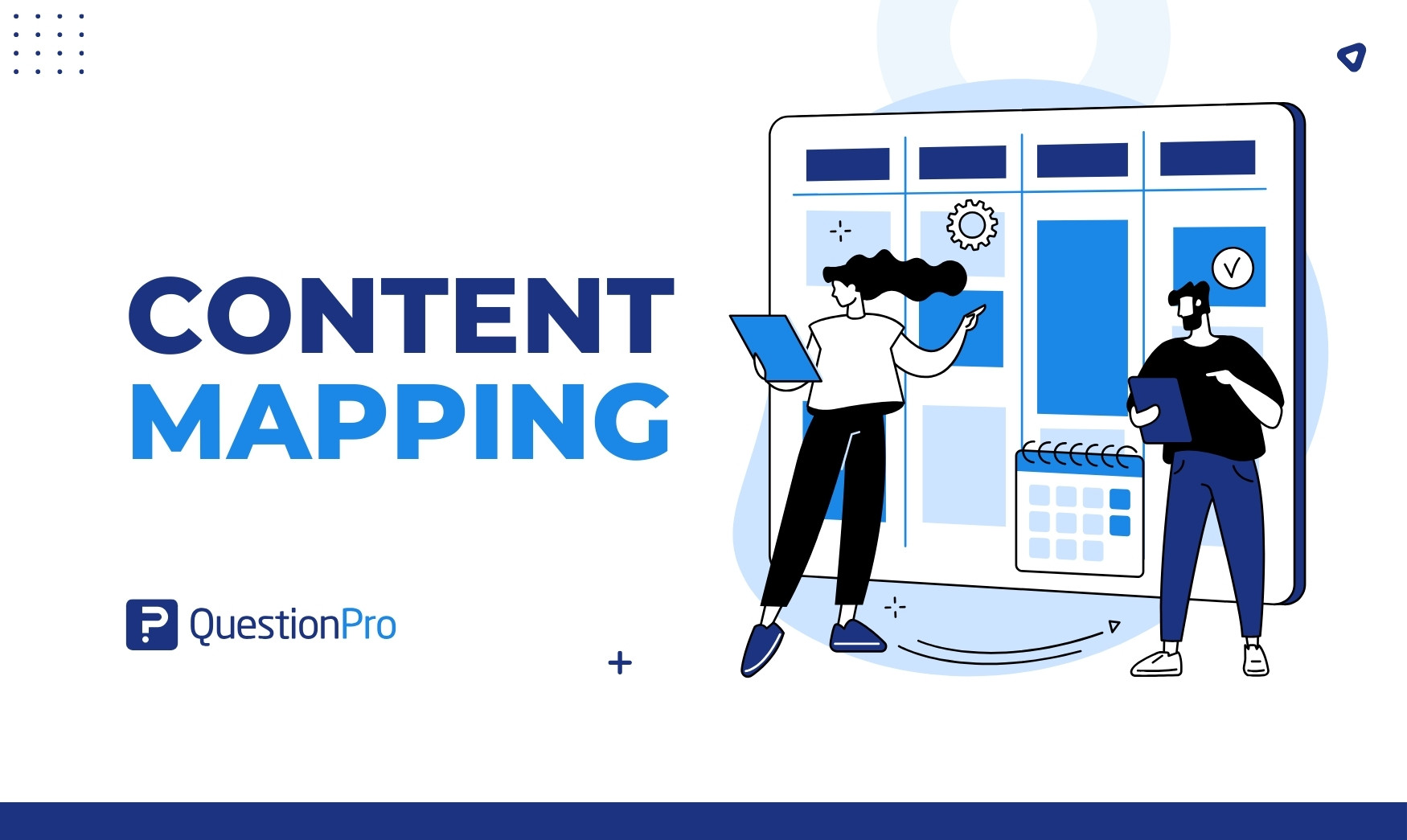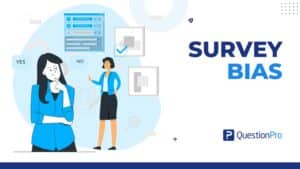
Creating and distributing valuable content has become a cornerstone for businesses aiming to establish a strong online presence through digital marketing. The sheer volume of content required to keep up with the demands of today’s audience can be overwhelming. This is where content mapping comes into play – a strategic approach that helps streamline content creation and distribution.
In this comprehensive guide, we will learn the intricacies of content mapping, exploring its definition, benefits, and how to create an effective content map for your business.
What is a Content Map?
A content map is a visual representation or diagram that outlines the structure, organization, and relationships between various pieces of content within a project, website, or content strategy.
It provides a comprehensive view of how different content elements connect and interact. In a broader sense, a content map can also refer to a plan or strategy for creating and managing content across different channels and platforms.
What is Content Mapping?
Content mapping is planning and organizing content to align with specific goals, target audience needs, and the overall marketing or communication strategy.
This involves identifying the types of content needed at different stages of the customer journey, specifying the topics and formats, and determining where and how the content will be distributed.
Importance of Content Mapping
The importance of content mapping lies in its ability to bring structure and strategy to the content creation and distribution process. Here are some key reasons why content mapping is crucial:
- Alignment with Business Goals: Content mapping helps ensure that the content created aligns with the overall goals and objectives of the business. It allows for a strategic approach to content creation and distribution.
- Target Audience Relevance: By mapping content to specific buyer personas or target audience segments, businesses can create content that resonates with their audience, increasing engagement and conversions.
- Consistency Across Channels: It helps maintain consistency in messaging and branding across various channels and platforms. It ensures that the content is cohesive and presents a unified brand image.
- Optimized Customer Journey: Through content mapping, businesses can design a customer journey that guides users through different stages of the buying process. This can enhance the user experience and encourage conversion.
- SEO and Search Visibility: Content mapping enables the strategic use of keywords and topics, contributing to improved search engine optimization (SEO) and increased visibility in search results.
- Resource Optimization: By planning content, businesses can allocate resources efficiently, ensuring content creation efforts focus on high-priority topics and channels.
How to Create a Content Map
Creating your own content map involves a series of steps to plan, organize, and schedule your content effectively. Here’s a step-by-step guide on how to create a content mapping template:
1. Define Objectives and Goals
Clearly outline the goals and objectives of your content strategy. Understand what you want to achieve, whether it’s increasing brand awareness, driving website traffic, generating leads, or nurturing existing customers.
2. Identify Target Audience
Define your target audience personas. Understand their demographics, interests, pain points, and behaviors. This information will guide you in creating content that resonates with your audience.
3. Conduct Content Inventory
Take stock of your existing content assets. Identify what content you already have, including blog posts, articles, videos, social media posts, etc. This helps you assess the gaps in your content and identify opportunities for repurposing.
4. Keyword Research
Conduct keyword research to understand what terms and phrases your target audience uses to search for content. Incorporate relevant keywords into your content map to enhance search engine optimization (SEO) and improve discoverability.
5. Content Calendar
Create a content calendar that outlines the publication schedule for your content. This includes specifying the type of content, publication dates, and distribution channels. Use spreadsheets, project management software, or dedicated content management platforms to organize and visualize your calendar.
6. Content Types and Formats
Specify the types of content you plan to create, such as blog posts, videos, infographics, podcasts, etc. Consider diversifying your content formats to keep your strategy engaging and appealing to different audience preferences.
7. Channel Selection
Determine the channels through which you’ll distribute your content. This could include your website, social media platforms, email newsletters, and other relevant channels. Tailor your content to each platform, considering the unique characteristics and requirements.
8. Create a Content Creation Workflow
Define a clear workflow for the content creation process. Outline the roles and responsibilities of team members involved, from content ideation and creation to editing and approval. Having a well-defined process helps streamline the content creation pipeline.
9. Set Publication Dates and Times
Schedule specific dates and times for content publication. Consider factors such as peak engagement times on social media, the timing of product launches or events, and any relevant industry trends or holidays.
10. Include Calls to Action (CTAs)
Integrate calls to action within your content maps. Clearly define the desired actions you want your audience to take after consuming your content, whether signing up for a newsletter, downloading a resource, or purchasing.
11. Review and Adapt
Regularly review the performance of your content by analyzing metrics such as engagement, conversion rates, and feedback. Use these insights to adapt and refine your content map over time.
12. Document Your Content Map
Document your content map in a centralized and accessible location. This could be a shared document, a project management tool, or a dedicated content planning platform. Ensure all team members can access the content map for collaboration and reference.
Content Mapping Tips
Content mapping is a strategic approach to planning and creating content that aligns with the needs and preferences of your target audience at different stages of their customer journey. Here are some tips to help you with content mapping:
Understand Your Audience
- Develop detailed buyer personas to understand your target audience’s demographics, interests, pain points, and preferences.
- Consider the various stages of the buyer’s journey: awareness, consideration, and decision-making.
Define Buyer’s Journey Stages
- Awareness Stage: Create content that addresses broad topics and pain points to attract a wider audience.
- Consideration Stage: Provide more in-depth content that educates your audience about potential solutions to their problems.
- Decision Stage: Offer content focusing on your products or services, helping potential customers make informed purchasing decisions.
Map Content to Specific Buyer Personas
- Tailor your content to the unique needs and preferences of each buyer persona.
- Consider job roles, challenges, and goals when creating content for different personas.
Choose Relevant Content Formats
- Select content formats that resonate with your audience at each stage of the buyer’s journey (e.g., blog posts, videos, infographics, whitepapers).
- Experiment with different formats to see which ones generate the most engagement.
Optimize for SEO
- Use relevant keywords throughout your content to improve search engine visibility.
- Ensure your content addresses common search queries related to your industry or products.
Create a Content Calendar
- Plan and schedule your content releases to maintain a consistent presence.
- Coordinate content releases with content marketing strategy, campaigns, and product launches.
Leverage Analytics
- Monitor the performance of your content using analytics tools.
- Identify popular content, track engagement metrics, and use insights to refine your content strategy.
Personalize Content
- Use data and insights to personalize content for different segments of your audience.
- Personalization can enhance the relevance of your content and improve the overall user experience.
Promote Social Sharing
- Include social media sharing buttons to encourage your audience to share your content.
- Leverage user-generated content and testimonials to build trust and credibility.
Feedback and Iteration
- Encourage feedback from your audience and adapt your content strategy based on insights and changing market trends.
- Continuously iterate and refine your content mapping strategy to stay relevant and practical.
Benefits of Content Mapping
Content mapping is a strategic planning tool used in content marketing to organize and align content with the needs and preferences of the target audience throughout the customer journey. Here are several benefits of content mapping:
Improved Audience Understanding
Content mapping allows you to gain a deeper understanding of your target audience. By identifying their needs, preferences, and pain points at each stage of the buyer’s journey, you can tailor your content to better resonate with them.
Enhanced User Experience
Mapping out your content helps ensure a seamless and personalized user experience. You can guide your audience through the customer journey by providing relevant content at each touchpoint, increasing engagement and satisfaction.
Strategic Planning
Content mapping enables strategic planning by aligning your content with specific business objectives. It helps prioritize and allocate resources effectively, ensuring that your content strategy contributes to overall business success.
Conclusion
Content mapping is a dynamic process that evolves with your business goals and audience preferences. Strategically planning and organizing your content enhances your online presence and engages your audience effectively.
Keep refining your content mapping strategy based on analytics, feedback, and emerging trends to stay ahead in the ever-evolving digital landscape.
QuestionPro CX proves instrumental in content mapping by leveraging robust feedback mechanisms. The platform’s advanced analytics and customer insights empower businesses to identify key touchpoints and tailor content accordingly precisely.
This strategic alignment enhances engagement, fosters customer satisfaction, and contributes to a more effective and targeted content strategy.







